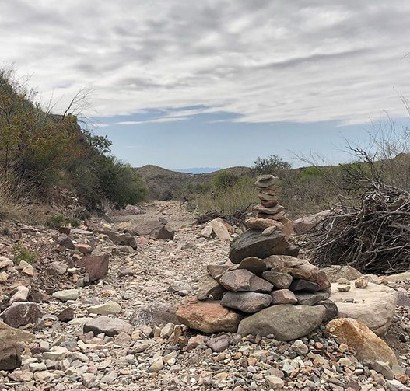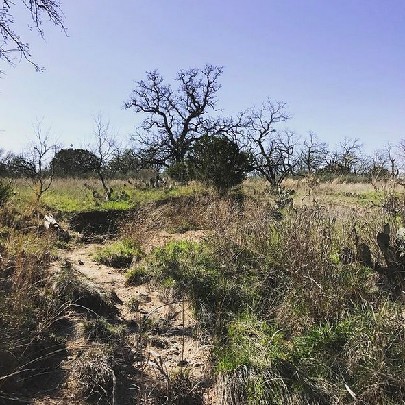The state of Texas has countless gems and minerals. Even after centuries of mining and excavations, rockhounds across Texas regularly report uncovering valuable specimens. These specimens include petrified wood, topaz, and jasper. It's also not unheard of for Texan treasure hunters to unearth fossils.
For the best shot at finding the items listed above (and more), you should visit the sites in Texas that have a proven record of high productivity. In this article we feature the best sites for rockhounding in Texas, and we we also cover the laws and regulations which govern the activity.
Laws
Rockhounding in Texas is governed by many of the same laws which govern the activity across America.
On public land managed by the Bureau of Land Management (BLM) your collections are limited to 25 pounds per day or 250 pounds per year. Rocks discovered must be kept in your personal collection. Selling your finds for financial gain is prohibited.
You can avoid restrictions by rockhounding exclusively on private property. However, you will need to obtain the permission of the property owner, preferably in writing.
| Product | ||
|---|---|---|
| Rock Pick |  |
|
| Gloves |  |
|
| Safety Goggles |  |
|
| Jeweler's Loupe |  |
Best Spots
The four spots listed below will give you the best chances for success.
Stillwell Ranch

Private land makes up a significant portion of Texas. That's why many of its most popular rockhounding areas are commercial sites. While you may be frustrated by the thought of having to spend money to hunt for gems and minerals, many of the sites which ask you to do so promise ample opportunity for success. Stillwell Ranch is one of them.
Stillwell Ranch is located near Alpine in Brewster County. Despite its proximity to such a large city, a feeling of separation from everyday life presides over the ranch- even when its campsite is overflowing with RVs. Many rockhounds revel in this isolation as it allows them to hunt in peace.
Agates are the most commonly uncovered gem at Stillwell Ranch. However, there are plenty of additional specimens to be found across its 22,000 acres. These specimens include jasper and petrified wood, both of which feature a distinctive Texan flair.
Bryan-College Station
Bryan-College Station is a diverse metropolitan area that connects the cities of Bryan and College Station. It stretches across three counties and boasts a population that is well in excess of 250,000.
Most rockhounds in Texas pay little attention to Bryan-College Station, likely due to its location. In fact, it seems like the only people who are aware of its rock collecting potential are its residents.
Agates, jasper, and quartz are all common in Bryan-College Station. However, the area is most noteworthy for its high concentration of petrified wood. Its forests, parks, and even its city streets are literally covered in petrified wood. For this reason, we often recommend Bryan-College Station to rockhounding novices who are eager to make their first find. One trip to the three-county area is virtually guaranteed to result in numerous discoveries.
Seaquist Family Ranch
Seaquist Family Ranch is located in Mason County. A cornerstone of rockhounding in Texas, this ranch has been attracting collectors for more than 50 years. Many of these collectors come in search of the area's famous topaz. Few collectors leave empty handed.
Mason County topaz is immediately recognizable due to its natural blue color. This separates it from Texas' more common white topaz and has made it a centerpiece in many collections.
It's important to note that Seaquist Family Ranch is another commercial rockhounding site. An admission fee is required and you are asked to make a reservation to secure a spot.
Bar M Ranch Services

Bar M Ranch Services is another commercial rockhounding site located in Mason. Here you can also find blue topaz. An entry fee is required. Rockhounding equipment can also be rented here for a small fee.
The most popular spot at Bar M Ranch Services is Honey Creek. Visitors successfully search the creek and its tributaries for blue topaz. White topaz is also common in Honey Creek, as is jasper and petrified wood.
Bar M Ranch Services is a small operation. This gives it something of a personal touch, with employees providing visitors with tips and guidelines for rockhounding success. However, it also means that missed reservations and late arrivals are not taken too kindly. If you reserve a spot to rockhound at the ranch, then make sure that you're on time and ready to start searching. This allows the ranch to run on schedule, while also giving you more time to dedicate to your hunt.
Conclusion
Texas is a great state for rockhounding. Its rockhounding sites contain unique specimens, ranging from petrified wood to blue topaz. With so many rocks to be found and so many sitesto visit, a Texan could go from novice to veteran without ever leaving the state!
Neighboring states also offer good opportunities. We recommend rockhounding in Arkansas and rockhounding in New Mexico.
